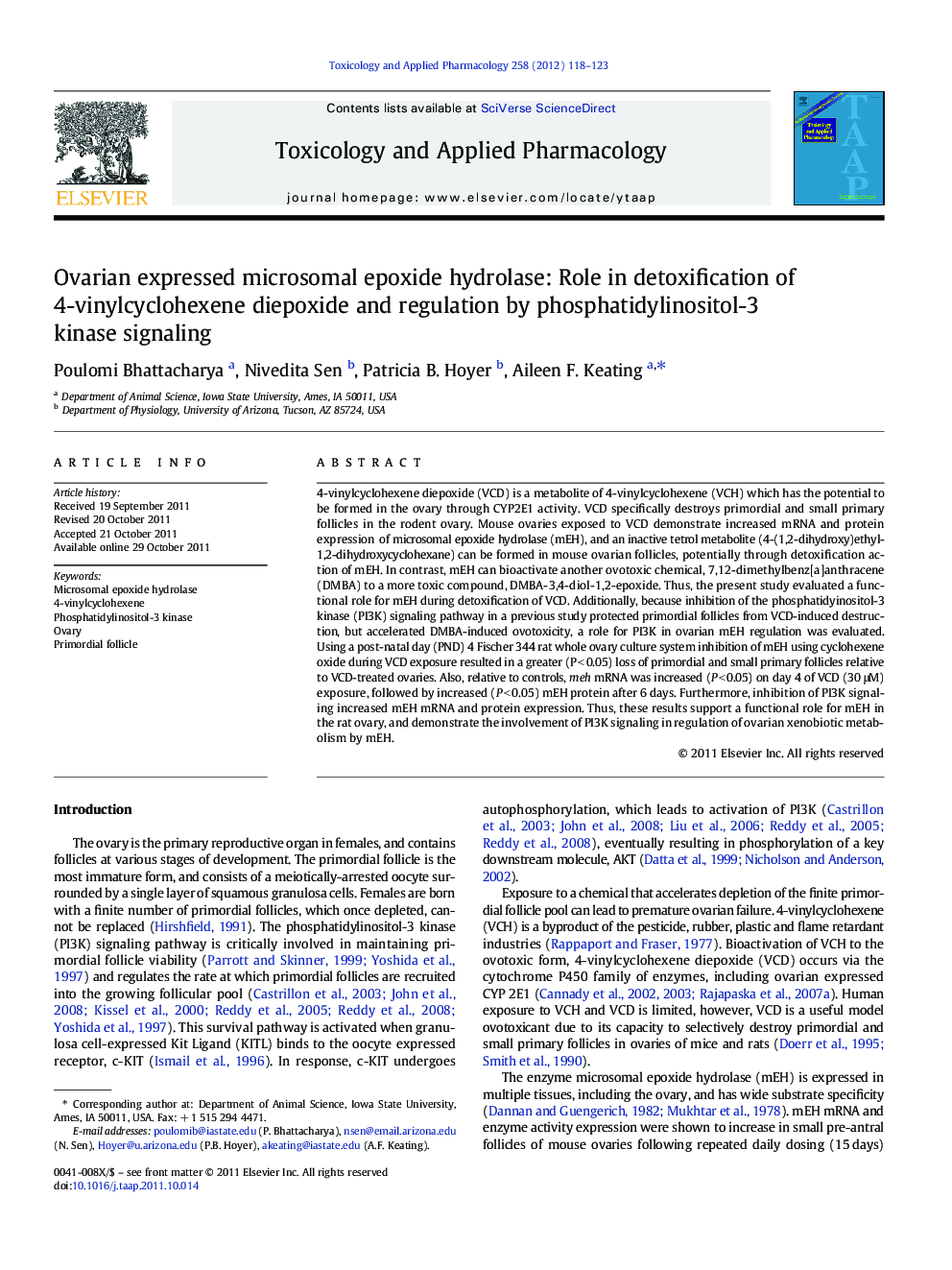| کد مقاله | کد نشریه | سال انتشار | مقاله انگلیسی | نسخه تمام متن |
|---|---|---|---|---|
| 2569413 | 1128528 | 2012 | 6 صفحه PDF | دانلود رایگان |

4-vinylcyclohexene diepoxide (VCD) is a metabolite of 4-vinylcyclohexene (VCH) which has the potential to be formed in the ovary through CYP2E1 activity. VCD specifically destroys primordial and small primary follicles in the rodent ovary. Mouse ovaries exposed to VCD demonstrate increased mRNA and protein expression of microsomal epoxide hydrolase (mEH), and an inactive tetrol metabolite (4-(1,2-dihydroxy)ethyl-1,2-dihydroxycyclohexane) can be formed in mouse ovarian follicles, potentially through detoxification action of mEH. In contrast, mEH can bioactivate another ovotoxic chemical, 7,12-dimethylbenz[a]anthracene (DMBA) to a more toxic compound, DMBA-3,4-diol-1,2-epoxide. Thus, the present study evaluated a functional role for mEH during detoxification of VCD. Additionally, because inhibition of the phosphatidyinositol-3 kinase (PI3K) signaling pathway in a previous study protected primordial follicles from VCD-induced destruction, but accelerated DMBA-induced ovotoxicity, a role for PI3K in ovarian mEH regulation was evaluated. Using a post-natal day (PND) 4 Fischer 344 rat whole ovary culture system inhibition of mEH using cyclohexene oxide during VCD exposure resulted in a greater (P < 0.05) loss of primordial and small primary follicles relative to VCD-treated ovaries. Also, relative to controls, meh mRNA was increased (P < 0.05) on day 4 of VCD (30 μM) exposure, followed by increased (P < 0.05) mEH protein after 6 days. Furthermore, inhibition of PI3K signaling increased mEH mRNA and protein expression. Thus, these results support a functional role for mEH in the rat ovary, and demonstrate the involvement of PI3K signaling in regulation of ovarian xenobiotic metabolism by mEH.
► Ovarian mEH functions to metabolize VCD to a less toxic compound.
► mEH expression is increased in a temporal pattern in response to VCD exposure.
► PI3K signaling is involved in regulation of ovarian mEH expression.
Journal: Toxicology and Applied Pharmacology - Volume 258, Issue 1, 1 January 2012, Pages 118–123